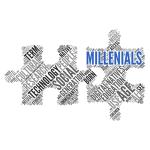5 Things Millennials Look for In Product Packaging
This entry was posted on June 13, 2016 .

Marketing Your Products to Generation Y Most businesses understand the pivotal role product packaging and labeling play in marketing. Everything from the colors and fonts to the graphics and wording on an item's container can influence the buying decisions of shoppers. However, when designing labels for goods, it is crucial that the seller takes into account the specific preferences of the target audience.
The millennial generation, which includes those born between 1981 and 2000, is now the largest demographic in the United States. According to Processor News, these individuals account for more than a quarter of the country's population and, collectively, represent about $200 billion a year in purchasing power - clearly making them an essential group for brands to market toward.
And there are a number of noteworthy differences between millennials and previous generations. For example, they are the first to have grown up in the age of the Internet, which has contributed to their general need for instant gratification and growing expectations of getting the solutions and services they need at lightning speed. It is important that businesses understand that traditional product marketing tactics used on the baby boomer generation, for example, may not be as effective with Gen Y.
Below are some of the most important things millennials look for in product packaging and labeling today.
1. Authenticity Given the rapid proliferation of mobile devices, increased channels of communication and instant access to the Web, millennials are more informed and connected than ever before. Therefore, they aren't as likely to take the claims made by a brand at face value. In fact, some would argue that they are especially skeptical about advertisements and promotions. They can research and compare products online and on the go, so it is important that sellers use labels that are a genuine and honest reflection of the organization.
In an article for Packaging Digest, Briana Long explained that research has indicated half of millennials between the ages of 18 and 24 feel that the brands they use are representative of the type of person they are. Put simply, companies should use product packaging and labeling to demonstrate their values align with those of Generation Y.
2. Sustainability Earlier this month, Bdaily pointed out that millennials are especially conscious about the environment and the impact that the products they purchase have on the planet. And, because Generation Y is expected to spend about $65 billion over the next 10 years on consumer packaged goods, it has caused brands to reconsider their approach to packaging. More companies will use eco-friendly labels and materials to attract the rising number of shoppers who value sustainability.
3. Personalization Another key quality marketers should embrace is customized packaging. Long explained that by personalizing products and labels, companies can increase interest and engagement levels among millennial shoppers. This strategy has been adopted by some of the biggest brand names in the consumer market today, including Coca-Cola and Oreo. Designing custom labels that appeal to this generation also helps businesses stand apart from competitors.
4. Compelling Storytelling Millennials have a constant stream of digital content and information coming at them across a wide range of channels. Companies need to leverage creative storytelling to entice consumers. As we mentioned above, this generation often seeks brands that are meaningful and posses some degree of value. One of the most effective ways for businesses to spark the interest of shoppers and improve product packaging is by humanizing the brand in a way that lets customers see it as being personable and relatable, rather than rigid.
5. Innovation In this digital era, customers are constantly presented with new, fresh ideas and content. To appeal to millennials, a product's packaging and labeling should reflect the ability of a company to stay up to date and in the know about the latest trends and preferences. For example, as Long also mentioned, using hashtags and quick-response codes is one way for marketers to engage younger audiences and take advantage of technological innovations.
With Generation Y quickly becoming the dominating force of the consumer market, it is imperative that brands take the time to adapt packaging and labeling to cater to young shoppers' needs and preferences. By considering what catches the attention of millennials, companies will be able to design a more effective and engaging product.
Request your FREE instant quote today.

 Custom Labels
Custom Labels  Custom Beverage Labels
Custom Beverage Labels  Custom Lip Balm Labels
Custom Lip Balm Labels  Custom Warning & Safety Labels
Custom Warning & Safety Labels  Perfume Bottle Labels
Perfume Bottle Labels  Bumper Stickers
Bumper Stickers  Custom Prop 65 Warning Labels
Custom Prop 65 Warning Labels  Custom Stickers
Custom Stickers